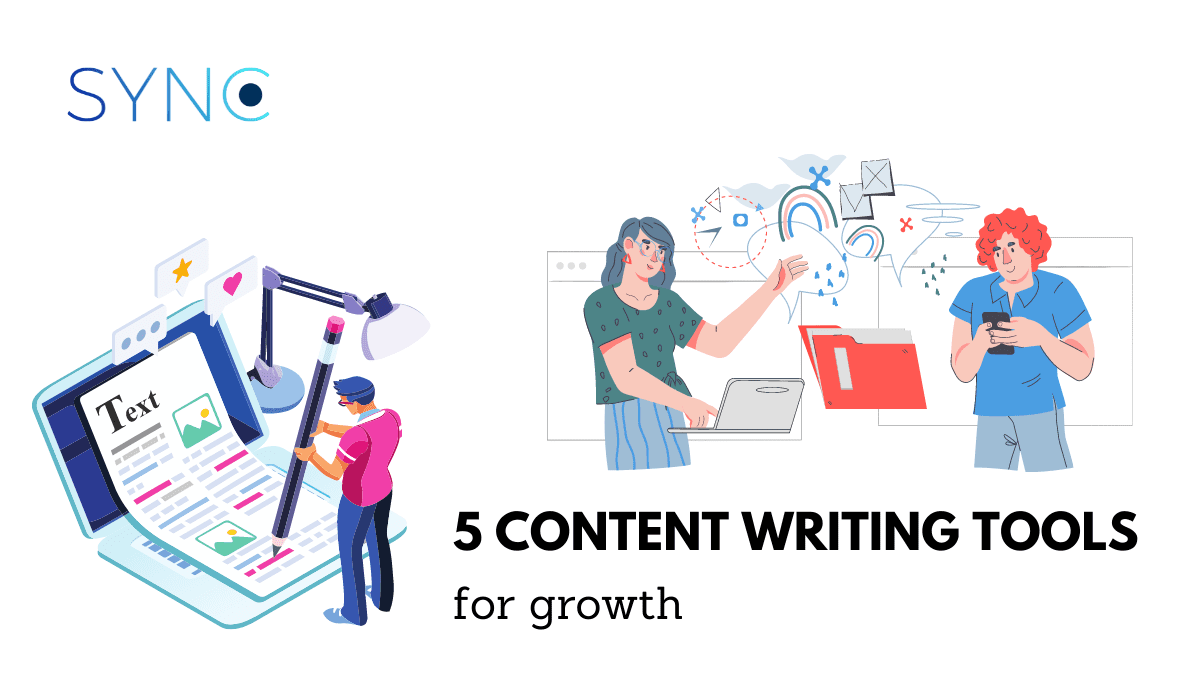The coronavirus pandemic has forever changed the way we live. As the world recovers and enters into a post-pandemic state, there’s no denying that everything has shifted to the digital realm. When it comes to digital marketing, content writing tools have become essential for many businesses looking to scale up.
The pandemic saw how digital transactions and the internet were ingrained in people’s lives. It introduced tech trends that helped everyone such as online shopping, contactless payments, remote work, and distance learning. However, these trends are not temporary; they may soon become the norm in a post-pandemic world.
The same goes for content writing tools. Even after the pandemic, content writing still continues to thrive in the digital landscape. For example, the pandemic forced businesses to shift online, and even brick and mortar businesses were not even spared to undergo digital transformation. Businesses had to utilize online platforms to reach and engage new audiences. In order to establish their presence, they had to showcase meaningful content. Some businesses even go to the extent of hiring writing agencies to churn content for their website as they believe it will yield high returns.
Now, content has become a valuable asset for businesses. Aside from reaching new customers, content has the power to improve customer retention. Useful information ensures that people will patronize services.
The power of content writing tools

Getting your content up to par or even exceeding the average is critical for any brand. So, the investment in purchasing and learning content writing tools is pretty important for any digital brand. But understanding why you need to make such a commitment is important too.
According to a 2020 report from Google, Temasek Holdings, and Bain & Company, there were 40 million people in six countries across Southeast Asia—Singapore, Malaysia, Indonesia, the Philippines, Vietnam, and Thailand—who went online for the first time in 2020. That brought the total number of internet users in Southeast Asia to 400 million people.
Internet users in Southeast Asia tend to spend more time online than the global average (6 hours and 54 minutes), according to a special report by the agency We are Social Singapore. The Philippines takes the top spot spending close to 11 hours a day online.
The figures indicate that there is a market for content. According to a Ruder Finn Asia survey which polled 1,600 consumers in Singapore, Malaysia, Indonesia, Thailand, Vietnam, and the Philippines, 18-to-35 year-olds, the younger Millennials and Generation Z, 63% reported that they made an unplanned purchase by reading content.
The reasons they made unplanned purchases and why they shared content are:
- The content had detailed product/information
- The content included promotions
- The content is visually appealing and easy to read.
The survey’s findings are evidence that having content can make a difference. However, producing good content that people want to read is not easy. Luckily, the internet provides an arsenal of writing tools that businesses can leverage in order to help them with their content needs. From checking the grammar to generating key ideas for content marketing strategies, here are five content writing tools that businesses can deploy:
1. Grammarly
At first glance, grammatical mistakes and spelling errors look harmless on the website’s copy. However, research suggests mistakes can affect the credibility of a business. Errors set a bad impression: if the content is plagued with mistakes, then people may assume and doubt the quality of products and services.
Businesses may want to employ Grammarly to detect grammar errors and conduct spell checks before finalizing their copy. The free version checks plagiarism, suggests writing styles and scans readability.
Grammarly offers premium (for individuals) and business (for teams) plans. Both are upgrades and can improve the clarity, engagement, and delivery of the content.
Read our guide to creating a content calendar.
2. UberSuggest
Keyword research is often overlooked in content marketing. The keywords determine what your business is all about. To put it simply, it is the process of researching popular terms that people type in search engines like Google. It is incorporated in the content so that when people search for something, the business’ website will appear higher on a search engine results page (SERP).
UberSuggest is a tool that can analyze keywords, backlinks, and domain data to improve SEO (search engine optimization). The tool allows you to look into keyword overview, keyword ideas, content ideas, top-ranking pages, and keywords. It can also suggest which keywords are performing well so the content can rank high in the SERP. With new keyword ideas, you can also think of new topics to write about.
UberSuggest has a free version and also offers three premium plans for deeper analysis. It is one of the most powerful content writing tools used by a lot of agencies and content writers.
3. Copyscape
Plagiarism is a serious offence. Like grammatical mistakes and errors, it can besmirch reputation and can compromise your integrity. Your credibility is in question, and people may question whether your business is legitimate or not.
Businesses use Copyscape to detect plagiarism. The tool ensures that the copy on websites is factual, credible, and original. According to Performance Driven Marketing, Copyscape has a premium membership that charges per word to scan copy, but it has a free version where you can compare your content to another website.
As far as content writing tools go, this might not be necessary if you’re the one writing the content, but as you scale, you definitely need a plagiarism tool.
4. Google Keyword Planner
An alternative to UberSuggest is Google Keyword Planner.
According to Google Keyword Planner’s site, it is a free tool that helps with research and selects the related keywords for your products and services.
Apart from identifying keywords, businesses use it to discover new search keywords, see average monthly search numbers, determine costs, and create new search ad campaigns.
The Google Keyword Planner can be used for PPC and SEO purposes.
We share top content resources that every startup should use
5. Wordstream
Search marketing company WordStream focuses more on PPC campaigns. It differentiates itself from Google Keyword Planner with its 20-Minute Work Week feature, which, according to the tool’s FAQ page, provides customized alerts that tell you how to optimize your account for lower costs and better results. It claims that keyword research takes longer in Google Keyword Planner or in any other tools. PPC campaigns in Google, Bing, and Facebook can be managed in the tool.
WordStream has three plans: WordStream Advisor, Advisor for Agencies, and Marketing Services. It offers a free keywords tool to optimize search campaigns.
Choosing the right content writing tools depends on what you are trying to achieve. Every brand is different, so getting it right might need some trial and error.
If you’re curious to learn more about content marketing and PR or want to speak to a SYNC consultant about starting your brand’s PR journey, contact us at hello@syncpr.co

